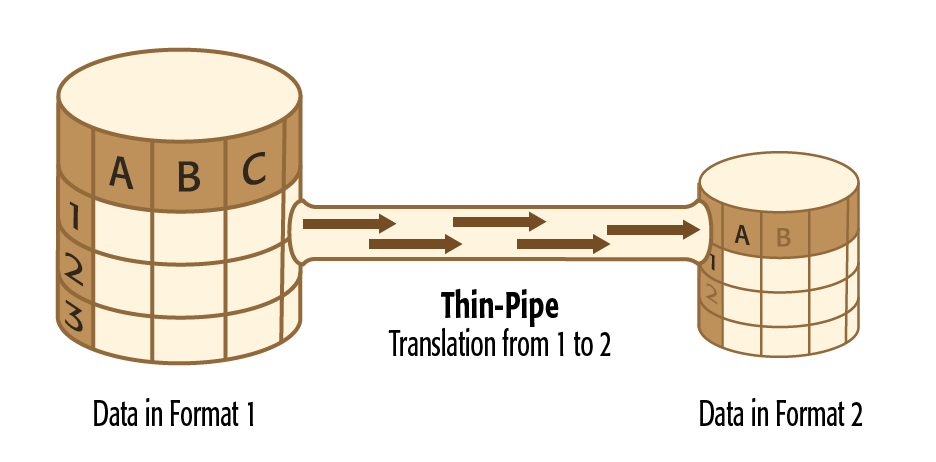FME (originally, the “Feature Manipulation Engine”) was designed to overcome many of the problems associated with traditional translation methods.
Traditionally the software used to translate data to a different format had limited capabilities. Most of the data would be forced through a limited data model causing much of the meaning to be lost in translation. We call this a “thin-pipe translation”.

What is ETL?
ETL (Extract, Transform and Load) can be described as a data warehousing tool that extracts data from a source, transforms it to fit the users’ needs, and then loads it into a destination or data warehouse.
FME was the first tool designed to be a spatial ETL application, focusing on translation of geographic data. Today, FME's ETL capabilities cover many different kinds of data, both spatial and non-spatial.
While an ETL tool must have processing capabilities for the various column types that are in a non-spatial database or system, a spatial ETL tool must also have the spatial operations – geoprocessing capabilities that change the structure and representation of spatial data – needed to move data from one spatial database or GIS to another.
How Does FME Work?
FME has a number of key characteristics:
Centralized
FME is a central engine amongst a whole array of supported formats (right). Data can be read from any format and written to any other. This means adding support for a new format automatically adds support to convert that data to or from any existing format.
Semantic
FME has a rich data model designed to cover all possible geometry and attribute types. Data will not lose meaning as it is read. The only limitations are those inherent in the destination format, and, where possible, FME will automatically compensate to create a seamless translation process.
Thick-Pipe
The ‘T’ in ETL is what traditional format translators lack. FME provides tremendous transformation functionality, resulting in output that can be much greater than the sum of the inputs.
